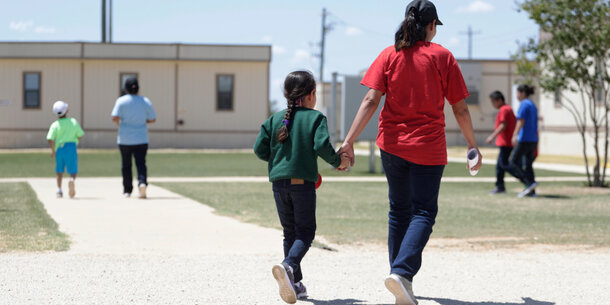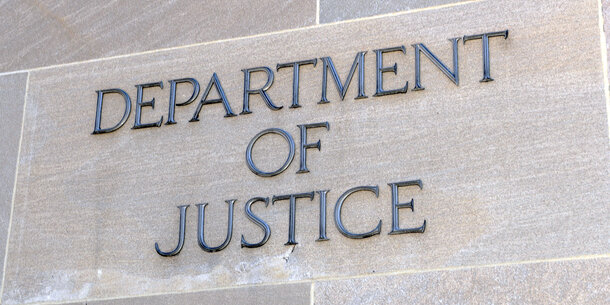Contrary to popular perception, it’s not just violent crimes like murder and assault that fill court dockets. Most often, it’s lesser offenses, such as shoplifting, low-level drug possession, or traffic infractions, that propel people into the criminal justice system.
Pinpointing the size of the minor offense system — which encompasses misdemeanors, violations, and infractions — is challenging. While misdemeanors are tracked to some extent, data on infractions and violations is sparse. Even still, the national data that is available reveals a stark reality: misdemeanors are the criminal justice system’s silent behemoth, with tens of thousands of people ticketed, arrested, or charged every day.
Many acknowledge that minor offenses require resolution, but there’s less awareness of the damage caused by their enforcement.
For individuals, the consequences of arrest or conviction for low-level offenses are anything but minor. Cases can be expensive and time-consuming to resolve, and they can limit a person’s access to jobs, housing, health care, and education. A 2020 Brennan Center report underscores the lasting repercussions of misdemeanor convictions, revealing an average annual earnings drop of 16 percent among those convicted. These harms disproportionately fall on communities of color, compounding existing racial inequities.
On a broader scale, minor offenses are a significant drain on government resources. The estimated policing and court costs of a single misdemeanor offense range between $2,190 and $5,896, straining already burdened budgets. This hefty price tag may be in vain, as research casts doubt on the notion that pursuing these cases truly enhances public safety.
Amid mounting criticism, policymakers have sought to reevaluate minor offense enforcement practices. Several states have embarked on initiatives to decriminalize nonviolent offenses, such as low-level drug possession, and implement diversion programs, offering alternatives to traditional arrest, prosecution, and incarceration. However, these efforts face resistance, particularly amid spiking concerns about public disorder following the Covid-19 pandemic.
In particular, New York City, long at the epicenter of criminal justice debates, has witnessed significant shifts in its approach to minor offense enforcement. In the 1990s, the city was an early adopter of “broken windows” policing, in which law enforcement aggressively cracked down on minor crimes with an eye toward deterring more serious crimes. This strategy entangled predominantly Black and Latino people in the criminal justice system for low-level offenses like marijuana possession, and it brought in a wave of complaints about police bias and misconduct. It also inspired controversial policies like stop and frisk, which has since been ruled unconstitutional.
Recent years have seen the city embrace criminal justice reforms aimed at making tactics less punitive and reducing minor offense caseloads. Even with these efforts, just as at the national level, misdemeanors continue to dominate New York City’s criminal justice system.
A new Brennan Center report provides a detailed analysis of minor offense cases in New York City between 2016 and 2022. Given spotty data and inconsistent definitions for minor offenses at the national level, homing in on New York City provides a granular view of recent enforcement trends and the populations most affected by them. What’s more, the city’s gradual transition away from the broken windows policing model offers insights into criminal justice reforms for jurisdictions grappling with their own challenges in minor offense enforcement.
The most common minor charges during the study period did not involve direct physical harm to others.
The absolute number of low-level offense cases decreased both nationwide and in New York City from 2016 to 2022. This continues downward trends that began in 2007 at the national level and in 2010 in New York City, which coincided with shifts in policing and prosecution. In New York City, specifically, declines were then fueled by the court-ordered reduction of stop-and-frisk practices in 2013 and the development of innovative diversion programs.
Overall, charges not involving physical harm fell from 2016 to 2022. The impact of the city’s efforts to decriminalize low-level offenses is reflected in the sharp drops in low-level drug possession charges and fare evasion charges. In an exception to this downward trend, petit larceny and other property-related charges rebounded in 2021 and 2022, though their numbers still remained below pre-pandemic levels.
A significant proportion of minor cases that did involve physical harm, especially assault cases, was related to domestic violence. This proportion grew in 2020, even as the absolute number of domestic violence cases, like all other charge types, dropped to its lowest point of the study period. This discrepancy is partly explained by the steep drop in enforcement across all minor case types during the Covid-19 pandemic. Additionally, accounts from New York City suggest that, as seen elsewhere, there was an uptick in domestic violence cases at this time, likely due to the increased risk factors associated with stay-at-home orders and the closure of community services.
While the overall minor caseload has decreased, one troubling pattern remains true: racial disparities persist. Throughout the study period, Black and Latino New Yorkers were overrepresented in minor offense cases when compared to their share of the city’s population.
Based on discussions that Brennan Center researchers had with police officers, prosecutors, court officials, city government officials, community service providers, advocates, and local leaders, it seems that these racial disparities stem from targeted policing efforts in Black and Latino communities facing socioeconomic challenges. Concentrated enforcement in neighborhoods with high levels of poverty, homelessness, mental health issues, substance use, resource limitations, and poor community conditions has been remarkably stable over time.
The outcome is a discernible pattern of minor offense enforcement heavily concentrated in specific zip codes.
The strong correlation between racial and socioeconomic factors and the number of misdemeanor arrests per zip code vividly illustrates the pitfalls of the criminal justice system’s overreliance on arrest and prosecution to address much larger social problems. Ultimately, it amounts to an approach that criminalizes race and poverty.
This isn’t just ethically dubious — it’s also ineffective. Most of those interviewed by Brennan Center researchers underscored the futility of taking a punitive-only approach to behavioral issues that stem from structural factors like housing instability, food insecurity, lack of available mental health treatment, and underemployment. As one community stakeholder shared, “Every time I went to jail and got slapped on the wrist for this misdemeanor, they knew that I was homeless. They did nothing to help me. They just let me go right back out there.”
To be fair, New York City has made considerable efforts to improve its criminal justice system. The number of people ordered to pay bail upon being charged has plummeted since 2016 thanks to the citywide expansion of court-supervised release and a 2020 state law barring judges from setting money bail for most misdemeanor and nonviolent felony cases. Only a very small number of people are ordered to remain in detention at the start of their case. Now, people charged with minor offenses are increasingly released on conditions, as the city’s diversion programs instead focus on connecting them with community services that aim to meet their needs, from mental health and substance use treatment, to housing assistance, to vocational training. While promising, these initiatives could benefit from greater funding and support. Conversely, the number of people released on their own recognizance — meaning they can avoid detention without having to post bail or comply with court conditions — has decreased compared to 2016.
As of 2020, non-convictions rather than guilty pleas became the most common result of minor offense cases. Though the drivers of these trends require further study, it’s likely that the expansion of diversion programs and the decriminalization of nonviolent low-level offenses, such as marijuana possession and fare evasion, played central roles.
Even for those convicted, only a small percentage were sentenced to jail. More commonly, people were sentenced to conditional discharge, which requires them to obey mandated conditions such as avoiding new arrests, remaining employed, completing community service, or participating in treatment programs.
Despite substantial declines, minor offense cases remain a burden on courts that are already stretched thin, especially after the Covid-19 pandemic. It takes months to resolve most minor offense cases, even though so few of them result in convictions. Individuals might need to appear in court repeatedly, raising the risk of lost jobs, earnings, childcare, and even housing. That these consequences can be so severe and far-reaching confirms what existing research suggests, including in New York City: with minor offense cases, the process itself is punishment.
While New York City has made strides in reforming its criminal justice system, there’s room for further improvement. It can do much more to tackle the root causes of lawbreaking by prioritizing community well-being over punitive measures. To start with, the city can continue to test and scale up its successful diversion programs and improved approaches to behavioral health and crisis response. More broadly, it can transform its law enforcement culture by encouraging police and government to work in collaboration with the neighborhoods they aim to make safer, tailoring strategies to serve underlying community needs, like crime prevention, economic opportunity, and improvements in physical infrastructure. Policymakers can support these efforts by investing in underserved communities that have borne the brunt of aggressive enforcement.
Even still, New York City’s experience offers lessons for jurisdictions nationwide. In light of finite law enforcement resources, it’s imperative to allocate them effectively. Criminalization and incarceration may offer short-term fixes at best; they don’t serve as long-term solutions for reducing crime and improving public safety and community well-being. Nor can we ignore the harsh collateral damage associated with these policies, especially for low-income people of color and other vulnerable groups. Instead, providing communities with the resources they need and reimagining the role of law enforcement can pave the way for lasting change and safer, more equitable societies.
This is an independent Brennan Center publication; the opinions expressed are those of the authors, or with express consent of stakeholders cited. This research was conducted with restricted access to the New York State Unified Court System’s Office of Court Administration (OCA) data and public data from the Centers for Disease Control and Prevention, the National Center for State Courts, the New York City Police Department via New York City Open Data, and the U.S. Census. Any data provided does not constitute an official record or views of any of these organizations.
Data Visualization Design by Will Merrow





